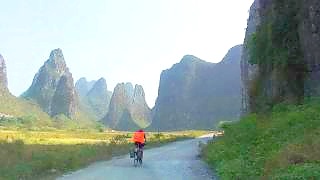An awesome film - don't miss it ...
[640],shadow=true,start=,stop=
Live more ...
 Beautiful GuangXi 广西 province by aerial drone …
Beautiful GuangXi 广西 province by aerial drone …An awesome film - don't miss it ...
[640],shadow=true,start=,stop=

|
With Living Asian ...
|

|
With Gabor Mate ...
|

|
With Brian Toon ...
With Carl Sagan (1985) ...
|

|
In ShaanXi province.
|

|
|

|
Among the beautiful karst hills between HeZhou 贺州 and YangShuo 阳朔 ...
|

|

|
Beijing, indeed China, is an embrace of both ancient and modern, diverse yet cohesive, humanity in harmony with nature - in short, it is :
☯
Bonus film - DongCheng district, the heart of Beijing ...
|